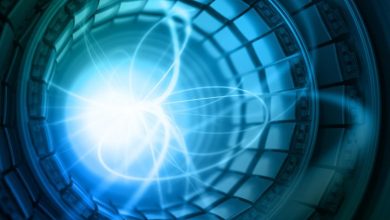
Fireflies use their light to attract mates. However, the downside of being visible to potential sexual partners is that it can bring you to predators’ attention. Scientists have now noticed that fireflies have evolved what sounds like a solution.
When we think of camouflage, it’s usually a visual pattern. But how do you hide from a predator that uses sound to find food, like a bat? If you’re a firefly, it turns out you might resort to a cacophony of ultrasound that acts like “musical armor.” This is a sound wave that the human ear, and more importantly, the firefly itself cannot detect.
Fireflies are known for their unique brilliance, which is used to signal mating. Since their bodies contain poison, blinking lights probably also serve as warning signals (warnings to potential predators). This signal is also a weakness of fireflies, simply because they are more likely to be targeted by predators. Bats are one of the most common potential predators of fireflies, and some bats have poor eyesight and disable flashing signals. This has led researchers to check if fireflies have an additional layer of protection against bats.
Unfortunately that defence mechanism isn’t going to help much when one of your most prolific predators – the bat – is all but blind. But in a new study, researchers from Tel Aviv University and the Vietnam Academy of Science and Technology (VAST) discovered that fireflies may have developed a clever audio armor instead. And the discovery came accidentally.
Professor Yossi Yovel explains that during a study that tracked bat echolocation, the idea for this study came up by chance. “We were wandering through the tropical forest with a microphone that could record high frequencies for bats, but suddenly we detected an unfamiliar sound of similar frequencies from fireflies,” he recalls. “A scrutiny using high-speed video revealed that fireflies make sounds by moving their wings, and that the fireflies themselves cannot hear this frequency. Therefore, this sound is internal communication within the species. “I assumed it wasn’t meant for,” adds Ksenia Krivoruchku, who holds a PhD. The student who led the research.

On closer inspection, the team found that the bugs make the noise by moving their wings, and follow-up lab tests found the behavior in at least four different firefly species. Importantly, the noise is at ultrasonic frequencies – meaning the fireflies can’t even hear it themselves. That suggests that they aren’t using it for any kind of communication between other members of their species.
Following a coincidental discovery, Professor Yovel’s lab team examined three common fireflies in Vietnam (Curtos Luciola, Sclerotia) and one Israeli species (Lampyroidea), all of which are unique to these. I have found that it emits ultrasonic sounds, but listen to them.
Can we conclude that fireflies have developed a special defense mechanism specifically for bats? Professor Yovel emphasizes that this claim was not proven in the study, but some features make this conclusion. First, the fireflies themselves are inaudible, but bats can listen to them and use them to find fireflies, so they are more likely to act as warning signals. Krivoruochku adds that the discovery of firefly ultrasound itself makes an important contribution to the study of the relationship between predators and prey. “The idea of a warning signal that the sender cannot detect himself is known in the plant world, but very rare among animals. The discovery of a” musical battle “between fireflies and bats goes further. May pave the way for. And perhaps the discovery of a new defense mechanism developed by animals against potential predators. ”
Bats, however, can hear it, which led the team to its working hypothesis that the ultrasound is a kind of musical armor to warn off the predator.
“The idea of warning signals that the sender itself cannot detect is known from the world of plants but is quite rare among animals,” says Yovel. “Our discovery of the ‘musical battle’ between fireflies and bats may pave the way for further research, and possibly the discovery of a new defense mechanism developed by animals against potential predators.”
Yovel admits he cannot prove it evolved as a mechanism for alerting bats that these insects are not for eating, but thinks there are several reasons to consider it likely. For one thing, the fact the sounds have a narrow peak around 40-50kHz, matching many bats’ prime hearing range, seems unlikely to be a coincidence.
The research was published in the journal iScience.




